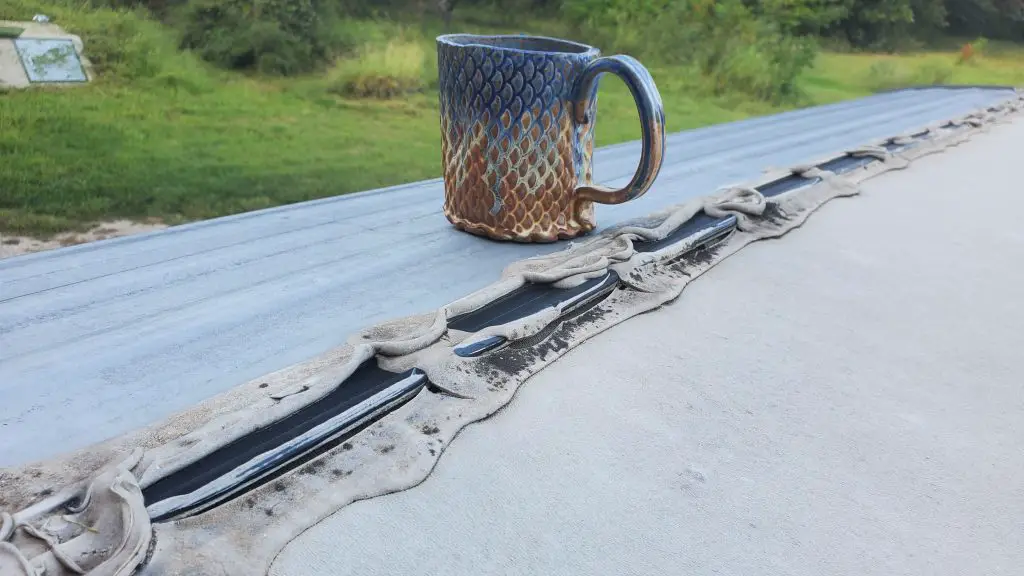Keeping your RV in top condition is important to ensure its longevity and prevent any water damage. One of the common maintenance tasks for RV owners is removing old sealant from the roof. Sealant deterioration can lead to leaks and compromise the integrity of your RV. In this article, we will guide you through the step-by-step process of removing old sealant from your RV roof.
Tools and Materials
Before you begin, gather the following tools and materials:
- Safety glasses
- Gloves
- Putty knife or scraper
- Roof cleaner or mild soap
- Clean, lint-free cloth
- Denatured alcohol or mineral spirits
- Sanding block or sandpaper (if needed)
- RV roof sealant
Step 1: Safety First
Before starting the removal process, put on your safety glasses and gloves to protect your eyes and hands from any potential hazards.
Step 2: Scrape Off Old Sealant
Using a putty knife or scraper, gently scrape off the old sealant from the RV roof. Be careful not to damage the roof or tear the rubber membrane underneath. Work methodically and start from one end, making your way to the other.
Step 3: Clean the Roof
After removing the bulk of the old sealant, clean the roof thoroughly using a specialized RV roof cleaner or mild soap mixed with water. This will remove any remaining residue and help prepare the roof for the new sealant.
Step 4: Remove Stubborn Sealant (if needed)
If there are stubborn bits of sealant that do not come off easily with scraping, you may need to use denatured alcohol or mineral spirits. Apply a small amount to a clean, lint-free cloth and gently rub the stubborn areas. Avoid excessive scrubbing or using abrasive materials as they can damage the roof.
Step 5: Sanding (if necessary)
If there are any rough or uneven spots on the RV roof after removing the sealant, use a sanding block or sandpaper to smooth them out. Be gentle and use light pressure to avoid causing damage to the roof’s surface.
Step 6: Apply New Sealant
Once the roof is clean and dry, it’s time to apply a new layer of sealant. Choose a high-quality RV roof sealant that is compatible with your RV’s roofing material. Follow the manufacturer’s instructions for application, ensuring an even and thorough coverage.
Step 7: Allow Sealant to Cure
After applying the new sealant, allow it to cure according to the manufacturer’s recommended time. This will ensure a proper bond and effective protection against water infiltration.
Step 8: Regular Inspections
Regularly inspect your RV roof for any signs of wear or damage. Pay close attention to areas where sealant is applied and address any issues promptly to prevent further damage.
Frequently Asked Questions Of How To Remove Sealant From Rv Roof
How Do I Remove Sealant From An Rv Roof?
To remove sealant from an RV roof, start by cleaning the surface with a mild detergent. Then, use a plastic scraper or putty knife to gently scrape away the old sealant. Finally, apply a sealant remover or rubbing alcohol to dissolve any remaining residue.
Can I Use A Heat Gun To Remove Sealant From My Rv Roof?
Yes, a heat gun can be used to soften and remove sealant from an RV roof. Set the heat gun to a low or medium setting, and carefully heat the sealant until it becomes pliable. Then, use a plastic scraper or putty knife to remove the softened sealant.
What Are Some Homemade Sealant Removers For Rv Roofs?
One effective homemade sealant remover for RV roofs is a mixture of baking soda and white vinegar. Apply the mixture to the sealant, let it sit for a few minutes, then scrub with a soft brush. Another option is to use a solution of equal parts rubbing alcohol and water.
Is It Necessary To Remove All The Old Sealant Before Applying A New One?
Yes, it is crucial to remove all the old sealant before applying a new one. This ensures proper adhesion of the new sealant and prevents leaks. Removing the old sealant also allows for a clean surface, which improves the overall appearance of the RV roof.
How Often Should I Remove And Reapply Sealant On My Rv Roof?
The frequency of removing and reapplying sealant on an RV roof depends on various factors such as climate, usage, and the type of sealant used. As a general guideline, it is recommended to inspect and touch up sealant every 1-2 years, and completely remove and reapply it every 4-5 years.
Conclusion
Removing old sealant from your RV roof is an essential part of RV maintenance. By following these step-by-step instructions, you can effectively remove old sealant and protect your RV against potential water damage. Remember to prioritize safety, choose the right tools and materials, and always follow the manufacturer’s instructions when applying new sealant. Regular inspections will help you catch any issues early on and ensure the longevity of your RV roof.
